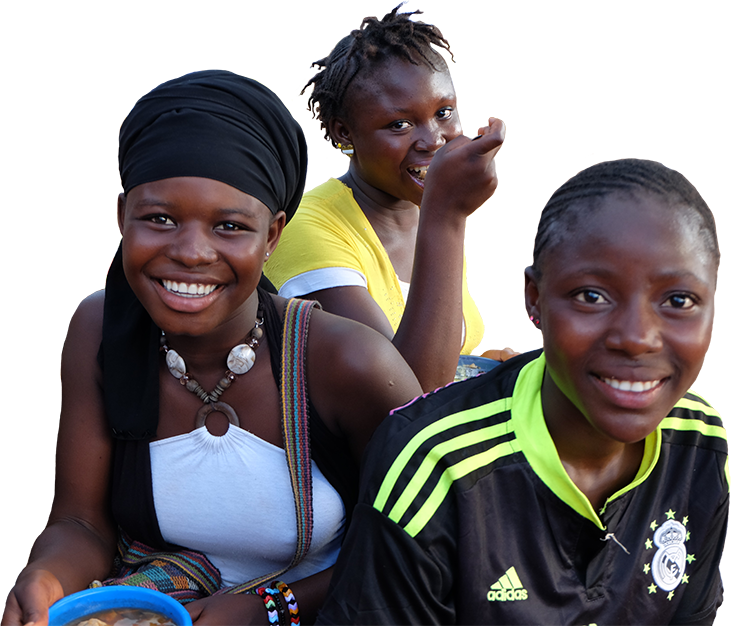Nutrition services typically do not prioritize adolescents and adolescent-friendly health services rarely include nutrition. Nutrition services need to be responsive to adolescents’ unique needs and priorities and address the barriers they face in accessing services. Programs must consider the diversity of adolescents’ situations and experiences, as well as the varied social norms and expectations of adolescents in the family and community. The Adolescent Nutrition Resource Bank includes guidelines and tools used in nutrition services for adolescents.If you have relevant service delivery documents or tools, please send them to info@advancingnutrition.org.
We found 136 resource(s)
Lives in the Balance: A COVID-19 Summit for the Health and Well-being of Women, Children and Adolescents
Video/Animation published by CORE Group, PMNCH in
Lives in the Balance was a virtual summit convened to discuss the health and well-being of women, children, and adolescents during the COVID-10 pandemic. Video recordings of the plenary, breakout, and "marketplace" (brief presentations highlighting programs) sessions are available.
Adolescent Nutrition in Indonesia: What Have We Learned?
Brief published by IFPRI in
This brief summarizes undernutrition and overweight/obesity among Indonesian adolescents and describes existing programs and policies targeting anemia, overweight/obesity and fruit/vegetable consumption. It also highlights potential bundling of interventions (iron supplementation, de-worming and nutrition education) and notes that both school- and…
Adolescent Nutrition Training App (UNICEF Bangladesh)
eLearning published by UNICEF in
This "Adolescent Nutrition Training" app (available on Google Play), developed by Riseup Labs, with assistance from UNICEF Bangladesh and the Ministry of Health of Bangladesh, provides a free online nutrition course in Bengali. Users will learn about the importance of adolescent nutrition, the situation in Bangladesh with regard to…
Operational Guideline for Adolescents Nutrition Interventions 2020
Guideline/Guidance published by UNICEF in
This Bangla-language operational guide is intended for use as a reference for the implementation of adolescent nutrition activities in schools and madrasas in Bangladesh. The guide is also intended to support the implementation of Bangladesh's Adolescent Nutrition Program 2020 and to facilitate multisector coordination in order to provide…
Maternal, Infant, Young Child and Adolescent Nutrition Action Plan 2020-2025
Policy published by Government of Uganda in
This action plan is the Ugandan Ministry of Health's 5-year plan to reduce all forms of malnutrition in mothers, infants, young children, and adolescents. The action plan's objectives include to increase adolescents' access to nutrition-specific services and to strengthen school nutrition programs to promote optimal adolescent nutrition for…
How to Coach Adolescents on Nutrition Decisions
Information, Education and Communication Materials published by National Academy of Sports Medicine in
This blog post provides a guideline for youth exercise professionals to use to coach adolescents on their nutrition and dietary choices. It highlights the importance of proper coaching on nutrition, adolescents' need to consume foods rich in calcium, vitamin D, and iron, and provides examples of nutritious meals.
Documentation Research on the USAID Growth through Nutrition Activity Adolescent Nutrition SBCC Program: Outcomes and Lessons Learned
Technical Report published by USAID in
This report documents the outcomes and lessons learned from a rapid assessment of Adolescent Nutrition SBCC programming in Ethiopia to identify strengths, weaknesses, and opportunities for improvement. The findings address the training of teachers and student group facilitators/leaders, actions that teachers, facilitators, and administrators can…
Our First Baby: Flipbook
Information, Education and Communication Materials published by Save the Children in
This flipbook accompanies the Facilitator’s Guide for Our First Baby: Health Education for Adolescents Who Are Pregnant Or First-Time Parents. It is designed to be used by a facilitator in group sessions in the community.



